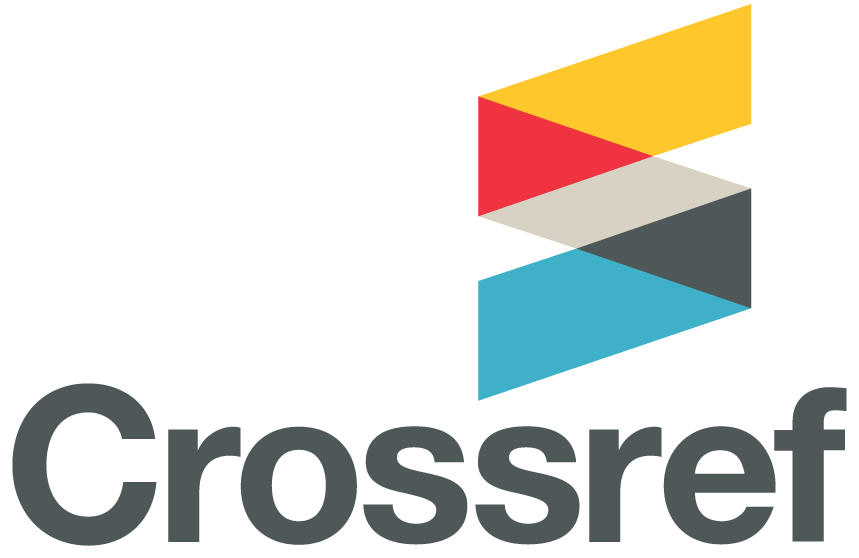rosmarinic acid effect on bonding performance to caries affected dentine
DOI:
https://doi.org/10.32828/mdj.v20i2.1128Keywords:
Caries affected dentine, Cross-linkers, Rosmarinic acid, Polyphenols, 1-step self, etch adhesive, bond strengthAbstract
Aim: This study investigated the effect of applying rosmarinic acid (RA) as dentine surface pretreatment on the immediate microtensile bond strength (µTBS) after 24h of water storage and delayed µTBS after 5000 thermocycles using 1-step self-etch adhesive (1-SEa) on artificial caries affected dentine (ACAD).
Method: In this experimental in vitro study, the dentine surface of 40 premolars were exposed and subjected to a pH-cycling procedure for ACAD induction. Next, teeth were divided randomly into two groups (n=20 each): ROS-group that was treated with RA solution (100µM RA in 5% ethanol) for 5s then dried for 5s, and control untreated group. One sample was taken from each group for surface analysis with SEM. Following bonding and composite build up procedures, the specimens were sectioned into 1mm2 beams and subjected to microtensile test after 24h (immediate) or 5000 thermal cycles (delayed). The fractured beams were examined under stereomicroscope to determine failure type. Data were analysed with t-test of independent variables, significance level was set at 0.05.
Results: ROS-group showed a significant increase in the immediate µTBS compared to control (p=0.003), while the µTBS of both groups were decreased significantly following thermocycling (p<0.001), without any difference between them (p=0.1598).
Conclusion: Rosmarinic acid can enhance only the immediate bond strength of 1-SEa on ACAD.
References
References:
1. Nakabayashi N, Kojima K, Masuhara E. The promotion of adhesion by the infiltration of monomers into tooth substrates. J Biomed Mater Res. 1982;16(3):265-273. doi:10.1002/jbm.820160307
2. Van Meerbeek B, Inokoshi S, Braem M, Lambrechts P, Vanherle G. Morphological aspects of the resin-dentin interdiffusion zone with different dentin adhesive systems. J Dent Res. 1992;71(8):1530-1540. doi: 10.1177/00220345920710081301
3. Nakabayashi N, Pashley DH. Hybridization of dental hard tissues. Tokyo: Quintessence Publishing; 1998. p. 16–89.
4. De Munck J, Van Landuyt K, Peumans M, Poitevin A, Lambrechts P, Braem M, et al. A critical review of the durability of adhesion to tooth tissue: methods and results. J Dent Res 2005; 84:118–32. DOI: 10.1177/154405910508400204
5. Breschi L, Mazzoni A, Ruggeri A, Cadenaro M, Di Lenarda R, De Stefano Dorigo E. Dental adhesion review: aging and stability of the bonded interface. Dent Mater 2008; 24:90–101. DOI: 10.1016/j.dental.2007.02.009
6. Seseogullari-Dirihan R, Apollonio F, Mazzoni A, Tjaderhane L, Pashley D, Breschi L, et al. Use of crosslinkers to inactivate dentin MMPs. Dent Mater 2016; 32:423–32. DOI: 10.1016/j.dental.2015.12.012
7. Mazzoni A, Angeloni V, Sartori N, Duarte Jr S, Maravic T, Tjäderhane L, et al. Substantivity of carbodiimide inhibition on dentinal enzyme activity over time. J Dent Res 2017; 96:902–908. DOI: 10.1177/0022034517708312
8. Goh KL, Meakin JR, Aspden RM, Hukins DW. Stress transfer in collagen fibrils reinforcing connective tissues: effects of collagen fibril slenderness and relative stiffness. J Theor Biol 2007; 245:305–11. DOI: 10.1016/j.jtbi.2006.10.008
9. Bedran-Russo AK, Pashley DH, Agee K, Drummond JL, Miescke KJ. Changes in stiffness of demineralized dentin following application of collagen crosslinkers. J Biomed Mater Res B Appl Biomater 2008; 86:330–4. DOI: 10.1002/jbm.b.31022
10. Fang M, Liu R, Xiao Y, Li F, Wang D, Hou R, Chen J. Biomodification to dentin by a natural crosslinker improved the resin-dentin bonds. J Dent 2012; 40:458–66. 10.1016/j.jdent.2012.02.008
11. Hass V, Luque-Martinez IV, Gutierrez MF, Moreira CG, Gotti VB, Feitosa VP, et al. Collagen cross-linkers on dentin bonding: stability of the adhesive interfaces, degree of conversion of the adhesive, cytotoxicity and in situ MMP inhibition. Dent Mater 2016; 32:732–41. DOI: 10.1016/j.dental.2016.03.008
12. Bravo, L. Polyphenols: Chemistry, Dietary Sources, Metabolism, and Nutritional Significance. Nutr. Rev. (1998); 56 (11), 317–333. DOI: 10.1111/j.1753-4887.1998.tb01670.x
13. Yang, H., Li, K., Yan, H., Liu, S., Wang, Y., and Huang, C. High performance Therapeutic Quercetin-Doped Adhesive for Adhesive-Dentin Interfaces. Sci. Rep.2017; 7; 8189. https://doi.org/10.1038/s41598-017-08633-3
14. Yi, L., Yu, J., Han, L., Li, T., Yang, H., and Huang, C. Combination of Baicalein and Ethanol-Wet-Bonding Improves Dentin Bonding Durability. J. Dentistry 2019; 90; 103207. DOI: 10.1016/j.jdent.2019.103207
15. Peng W, Yi L, Wang Z, Yang H, Huang C. Effects of resveratrol/ethanol pretreatment on dentin bonding durability. Mater Sci Eng C Mater Biol Appl. 2020; 114:111000. DOI: 10.1016/j.msec.2020.111000
16. Mazzoni A, Angeloni V, Comba A, Maravic T, Cadenaro M, Tezvergil-Mutluay A, Pashley DH, Tay FR, Breschi L. Cross-linking effect on dentin bond strength and MMPs activity. Dent Mater. 2018;34(2):288-295. DOI: 10.1016/j.dental.2017.11.009
17. Epasinghe DJ, Yiu CK, Burrow MF, Tay FR, King NM. Effect of proanthocyanidin incorporation into dental adhesive resin on resin-dentine bond strength. J Dent. 2012 Mar;40(3):173-80. DOI: 10.1016/j.jdent.2011.11.013
18. Yang H, Guo J, Deng D, Chen Z, Huang C. Effect of adjunctive application of epigallocatechin-3-gallate and ethanol-wet bonding on adhesive-dentin bonds. J Dent. 2016; 44:44-9. DOI: 10.1016/j.jdent.2015.12.001
19. Ruksaphon K, Pisol S. Efficacy of chlorhexidine and rosmarinic acid to prevent resin/dentine interface degradation. Dent Oral Craniofac Res 2017; 4:1-9. DOI: 10.15761/DOCR.1000240
20. Nakajima M, Sano H, Burrow MF, Tagami J, Yoshiyama M, Ebisu S, Ciucchi B, Russell CM, Pashley DH. Tensile bond strength and SEM evaluation of caries-affected dentin using dentin adhesives. J Dent Res. 1995;74(10):1679-88. DOI: 10.1177/00220345950740100901
21. Yoshiyama M, Tay FR, Doi J, Nishitani Y, Yamada T, Itou K, et al. Bonding of self-etch and total-etch adhesives to carious dentin. J Dent Res. 2002; 81:556–560. DOI: 10.1177/154405910208100811
22. Ceballos L, Camejo DG, Fuentes VM, Osorio R, Toledano M, Carvalho RM, et al. Microtensile bond strength of total-etch and self-etching adhesives to caries-affected dentine. J Dent.2003; 31:469–477. DOI: 10.1016/s0300-5712(03)00088-5
23. Lemos M, Araujo-Neto VG, Lomonaco D, Mazzetto SE, Feitosa VP, Santiago SL. Evaluation of Novel Plant-derived Monomers-based Pretreatment on Bonding to Sound and Caries-affected Dentin. Oper Dent. 2022;47(1):E12-E21. doi:10.2341/20-138-L
24. Salah Z, Sleibi A. Effect of deep margin elevation on fracture resistance of premolars restored with ceramic onlay: In vitro comparative study. J Clin Exp Dent. 2023;15(6):e446-e453. doi: 10.4317/jced.60384
25. Nicoloso GF, Antoniazzi BF, Lenzi TL, Soares FZ, Rocha RO. Is There a Best Protocol to Optimize Bond Strength of a Universal Adhesive to Artificially Induced Caries-affected Primary or Permanent Dentin? J Adhes Dent. 2016;18(5):441-446. DOI: 10.3290/j.jad.a36669
26. Lenzi TL, Soares FZ, Tedesco TK, de Oliveira Rocha R. Is It Possible to induce Artificial Caries-affected Dentin using the Same Protocol to Primary and Permanent Teeth? J Contemp Dent Pract. 2015;16(8):638-42. DOI: 10.5005/jp-journals-10024-1734
27. Al-Obaidi ZS, Jasim HH. Assessment of Shear Bond Strength to Sound and Artificial Caries Affected Dentin Using Different Adhesive Systems: An In Vitro Study. Dent Hypotheses 2023; 14:3-5. DOI: 10.4103/denthyp.denthyp_126_22
28. Shioya Y, Tichy A, Yonekura K, Hasegawa M, Hatayama T, Ikeda M, Tagami J, et al. Sodium p-Toluenesulfinate Enhances the Bonding Durability of Universal Adhesives on Deproteinized Eroded Dentin. Polymers (Basel) 2021; 13: 3901. DOI: 10.3390/polym13223901
29. Zuluaga-Morales JS, Bolaños-Carmona MV, Cifuentes-Jiménez CC, Álvarez-Lloret P. Chemical, Microstructural and Morphological Characterisation of Dentine Caries Simulation by pH-Cycling. Minerals 2022; 12: 5. DOI: 10.3390/min12010005
30. Lau, C.H.; Chua, L.S.; Lee, C.T.; Aziz, R. Fractionation of rosmarinic acid from crude extract of Orthosiphonstamineus by solid phase extraction. J. Eng. Sci. Technol. 2015,10, 104–112. DOI: 10.13140/2.1.4106.0808
31. Prasansuttiporn T, Nakajima M, Kunawarote S, Foxton RM, Tagami J. Effect of reducing agents on bond strength to NaOCl-treated dentin. Dent Mater. 2011;27(3):229-34. DOI: 10.1016/j.dental.2010.10.007
32. Prasansuttiporn T, Thanatvarakorn O, Mamanee T, Hosaka K, Tagami J, Foxton RM, et al. Effect of antioxidant/reducing agents on the initial and long-term bonding performance of a self-etch adhesive to caries-affected dentin with and without smear layer-deproteinizing. Int J Adhes Adhes 2020; 102; 102648. DOI: 10.1016/j.ijadhadh.2020.102648
33. Prasansuttiporn T, Thanatvarakorn O, Tagami J, Foxton RM, Nakajima M. Bonding Durability of a Self-etch Adhesive to Normal Versus Smear-layer Deproteinized Dentin: Effect of a Reducing Agent and Plant-extract Antioxidant. J Adhes Dent. 2017;19(3):253-258. DOI: 10.3290/j.jad.a38409
34. Cristiane Franco Pinto, Sandrine Bittencourt Berger, Vanessa Cavalli, Ana Karina Bedran-Russo, Marcelo Giannini. Influence of chemical and natural cross-linkers on dentin bond strength of self-etching adhesives, Int J Adhes Adhes. 2015,60,117-122, DOI: 10.1016/j.ijadhadh.2015.04.008
35. Gabrielle de Carli, Doglas Cecchin, Katiane Cavagnoli Ghinzelli, Matheus Albino Souza, Cristina de Mattos Pimenta Vidal, Livia Tosi Trevelin, Ana Karina Bedran-Russo, Ana Paula Farina, Effect of natural collagen cross-linker concentration and application time on collagen biomodification and bond strengths of fiber posts to root dentin, Int J Adhes Adhes. 2018;87,42-46, DOI: 10.1016/j.ijadhadh.2018.09.011
36. Zhao S, Hua F, Yan J, Yang H, Huang C. Effects of Plant Extracts on Dentin Bonding Strength: A Systematic Review and Meta-Analysis. Front Bioeng Biotechnol. 2022; 10:836042. DOI: 10.3389/fbioe.2022.836042
37. Masatoshi Nakajima, Sitthikorn Kunawarote, Taweesak Prasansuttiporn, Junji Tagami, Bonding to caries-affected dentin, Japanese Dental Science Review2011;47:102-114. DOI: 10.1016/j.jdsr.2011.03.002
38. Follak AC, Miotti LL, Lenzi TL, Rocha RO, & FZM., S. Self-etch Approach of Universal Adhesives as an Alternative to Minimize Bond Degradation on Sound Dentin vs Caries-affected Dentin over Time. J Adhes Dent. 2021;23(3):243-252. DOI: 10.3290/j.jad.b1367889
39. Kuno Y, Hosaka K, Nakajima M, Ikeda M, Klein Junior CA, Foxton RM, Tagami J. Incorporation of a hydrophilic amide monomer into a one-step self-etch adhesive to increase dentin bond strength: effect of application time. Dent Mater J. 2019; 38:892–899. DOI: 10.4012/dmj.2018-286
40. Sato T, Takagaki T, Ikeda M, Nikaido T, Burrow MF, Tagami J. Effects of selective phosphoric acid etching on enamel using “no-wait” self-etching adhesives. J Adhes Dent. 2018; 20:407–415. DOI: 10.3290/j.jad.a41359
41. Saito T, Takamizawa T, Ishii R, Tsujimoto A, Hirokane E, Barkmeier WW, Latta MA, Miyazaki M. Influence of application time on dentin bond performance in different etching modes of universal adhesives. Oper Dent. 2020; 45:183–195. DOI: 10.2341/19-028-L
42. Huang XQ, Pucci CR, Luo T, Breschi L, Pashley DH, Niu LN, Tay FR. No-waiting dentine self-etch concept-Merit or hype. J Dent. 2017; 62:54–63. DOI: 10.1016/j.jdent.2017.05.007
43. Serin-Kalay Tugba, Zaim Beyza. Effect of alternative self-etch applications on dentin bond strength of “No Wait Concept” universal adhesives. Odovtos. 2022; 24(1): 58-66. DOI: https://doi.org/10.15517/IJDS.2021.45844
44. Saikaew P., Chowdhury A.F.M.A., Fukuyama M., Kakuda S., Carvalho R.M., Sano H. The effect of dentine surface preparation and reduced application time of adhesive on bonding strength. J Dent. 2016; 47: 63-70. DOI: 10.1016/j.jdent.2016.02.001
45. Morresi AL, D'Amario M, Monaco A, Rengo C, Grassi FR, Capogreco M. Effects of critical thermal cycling on the flexural strength of resin composites. J Oral Sci. 2015 Jun;57(2):137-43. DOI: 10.2334/josnusd.57.137
46. Morresi AL, D'Amario M, Capogreco M, Gatto R, Marzo G, D'Arcangelo C, Monaco A. Thermal cycling for restorative materials: does a standardized protocol exist in laboratory testing? A literature review. J Mech Behav Biomed Mater. 2014 Jan; 29:295-308. DOI: 10.1016/j.jmbbm.2013.09.013
47. Mohammed R. “Assessment of Shear Bond Strength of Polycarboxylate Cement Reinforced by Different Amounts of Hydroxyapatite”. Mustansiria Dental Journal, vol. 7, no. 2, Mar. 2018, pp. 161-5, doi:10.32828/mdj.v7i2.393. DOI: https://doi.org/10.32828/mdj.v7i2.393
48. Awad, AS, Al-Zaka I. “Comparative Analysis of Marginal Adaptation of Different Root Canal Sealers Using Scanning Electron Microscope”. Mustansiria Dental Journal, vol. 19, no. 2, Dec. 2023, pp. 251-9, DOI: 10.32828/mdj.v19i2.982
Downloads
Published
Issue
Section
Categories
License
Copyright (c) 2024 shatha issa, Mustafa Ibrahim Alani, Emad Abdelfatah Aboalazem, Ahmed Sleibi

This work is licensed under a Creative Commons Attribution 4.0 International License.
The Journal of Mustansiria Dental Journal is an open-access journal that all contents are free of charge. Articles of this journal are licensed under the terms of the Creative Commons Attribution International Public License CC-BY 4.0 (https://creativecommons.org/licenses/by/4.0/legalcode) that licensees are unrestrictly allowed to search, download, share, distribute, print, or link to the full texts of the articles, crawl them for indexing and reproduce any medium of the articles provided that they give the author(s) proper credits (citation). The journal allows the author(s) to retain the copyright of their published article.
Creative Commons-Attribution (BY)








